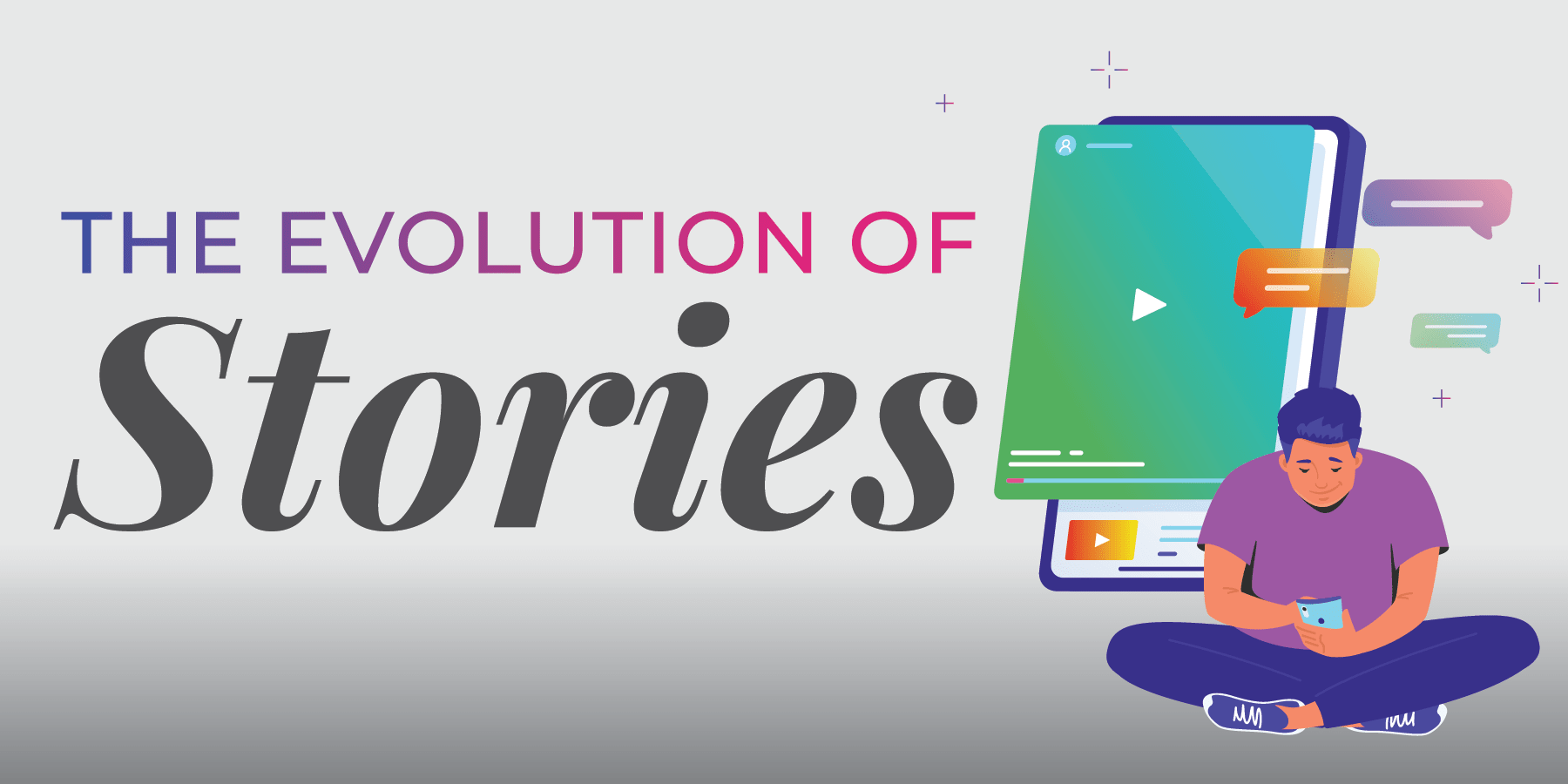The concept of Stories has come really far since Snapchat first launched in 2011. This platform started out as a simple idea: to send photos that eventually disappear to close friends. In 2013, Snapchat launched Stories, a 24-hour content format that changed the game and disrupted video as we knew it. For mobile-first generations this option that eliminated the need for screen turning was what they were craving without even knowing it. Criticized at first, vertical video became widely popular and the preferred format for an always-mobile audience.
Nowadays, most platforms include their own version of a Story feature. Even though every platform, from Instagram to LinkedIn, puts their own spin to it, the concept of a Story remains the same across the board: vertical bite-sized content that only lives for 24 hours.
So far, Story features have been successful with audiences on social media. 500 million people use Instagram Stories every day, with 62% of people reporting they have become more interested in a brand or product after seeing it in Stories. Parent company Facebook has 300 million daily active users on Stories. In recent years, platforms such as Pinterest and Twitter have followed Facebook’s lead and are launching their own features for Stories.
For influencer marketing, Story features have been incredibly useful. Brands and influencers use this format to add an extra layer of authenticity to their collaborations.
We can’t forget to mention that before we had Instagram Shopping, it was a backbreaking exercise to create website traffic or drive conversions through sponsored posts. Swipe-ups became an attractive call-to-action and the perfect solution for marketers to measure success. Today, these platforms offer a variety of features that make social commerce the hottest trend in social media today.
“From an influencer marketing perspective, stories have also become a great complement for the more polished in-feed content that creators post. It’s a chance to show some behind-the-scenes, add more context, or tell a vlog-style story in short-form digestible clips. The most recent feature available to brands has been the shoppable sticker feature, which makes the path to purchase even easier for retailers and brands.
The ephemeral nature of stories drives up the incentive for followers to watch them before they expire. Additionally, the format of stories, paired with the editing and design tools that make it easy for anyone to “create” great content from their phones has been a huge success for Instagram and speaks volumes about user preferences and habits. As we see with the rise of platforms like TikTok (and a decrease in attention spans), I expect we’ll continue to see a shift towards short-form video content that delivers the message in a punchy and creative way (see: Reels).” – Maggie Reznikoff, Director of Account Management, Open Influence.
As we see how the industry adapts and optimizes for a diversity of formats to fit today’s multifaceted consumer, we recognize vertical video as one of the most powerful ways to tell your brand story. Tapping into this immersive, full-screen experience that adds extra storytelling layers like stickers, music and AR effects, has been a no-brainer for creators and brands alike.

Want to learn more on how to incorporate Stories into your influencer marketing strategy? Contact Open Influence.

